We arrived in the Marquesas in early November, wow – what a contrast with the Tuamotus! The flat sandy motus and aquamarine lagoons have been replaced with sheer, rocky, black basalt cliffs blanketed in verdant green vegetation. Gone the white sand beaches with gentle lapping waves, here we have white surf pounding in black shingle beaches. The anchorages are mostly small and deep and often quite crowded. Swell seems to be a common feature of the bays in the Marquesas, even on the leeward side of the island the swell manages to wrap around and get in. A stern anchor is usually needed to keep the bow into the swell, lessening the boat roll and reducing the chance of colliding with your neighbours!
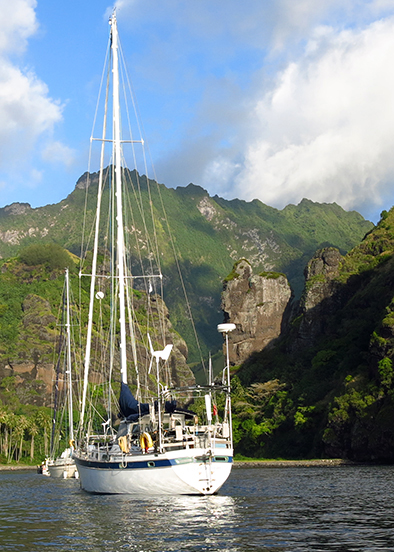
Our first port of call was the Bay of Virgins in Fatu Hiva. People had told us it was one of the prettiest anchorages in French Polynesia and it is truly stunning. From the anchorage you can see the slopes of a green fertile valley through a narrow gate in the cliffs with the village nestled at the entrance. As you look at the cliffs faces metamorphose out of the rocks, changing with the shifting light. If you look really carefully you can spot tiny goats balanced on the crags – delicious cooked with coconut milk, a Marquesan speciality.
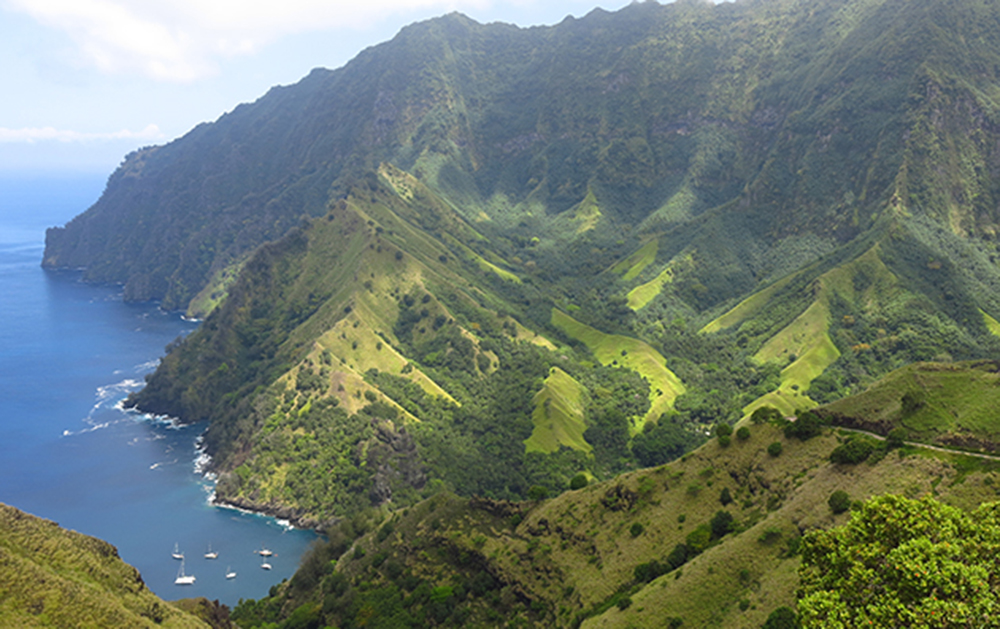
There is no shortage of water here, rivers and waterfalls abound. Down by the quay there are two taps which the yachties are welcome to use for bathing or filling the water tanks. It is a real pleasure just to stand under the flow and rinse away all the salt and sweat of the day! It is a little public but also a great place to watch daily life go by; kids shrieking and splashing around in the harbour, men washing their horses in the surf, I witnessed a remarkably hostile quarrel between a woman and a young man shouted across the wharf while I was washing my hair!!!
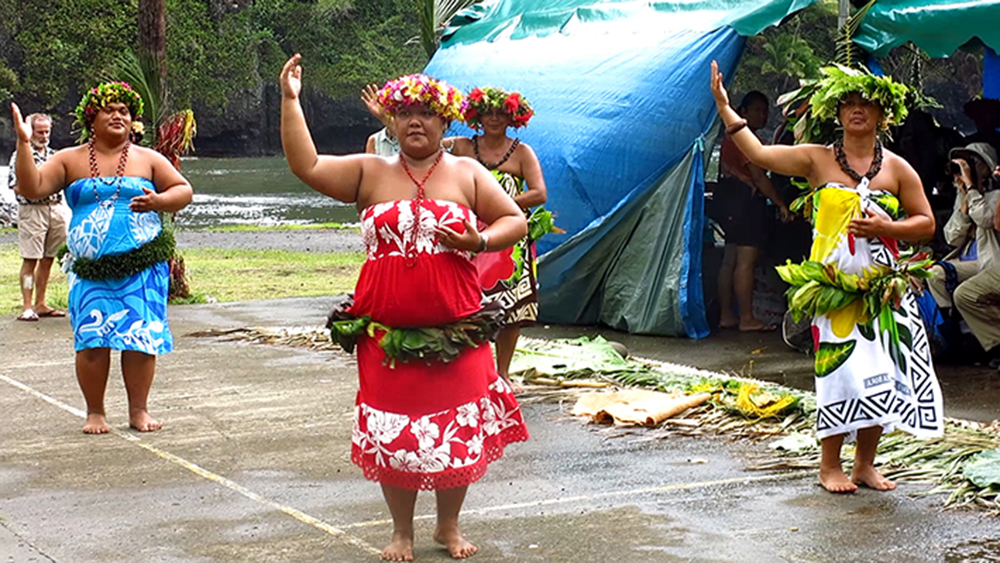
The villages are generally well kept and have splendid gardens with all manner of verdant tropical flowers and plants bursting with life, Bouganvillia and Hibiscus provide shade and vibrant colour, frangipani and tiare, the national flower, add a rich sweet bouquet. Fruit trees growing wild along the roads and in the forest are drooping with mangoes, grapefruit, bananas and breadfruit in abundance. The bark of the breadfruit tree is used to make the local paper Tapa which is then painted with local designs and is a bit of a speciality of Fatu Hiva. The Aranui visits the island once a fortnight bringing cargo and tourists. An impromptu craft market is set up on the quay with demonstations of carving, tapa making and dancing.
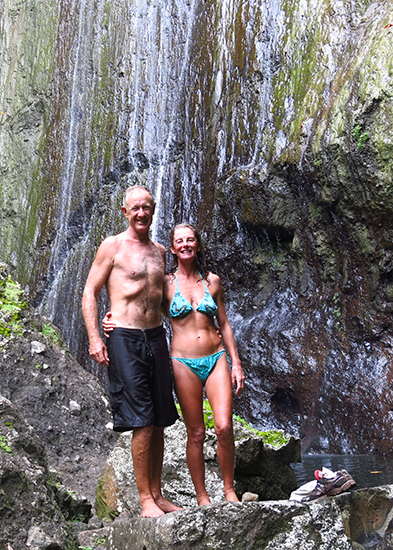
A walk up to the waterfall was a must. The route follows the road for about 1km then turns left along a dirt track and crosses a couple of rivers before branching off to the left again through the jungle. We got a bit lost at this point and followed an unmarked path which soon diminished into nothing much at all but we did find an exceptionally large banyan tree so it was worth the detour. We backtracked and found the right path marked by stone cairns we enthusiastically added to so no-one else would miss the track! The waterfall was about 25m high with a moderate flow into a wonderfully cool dark plunge pool. Bliss after the humidity of the jungle.
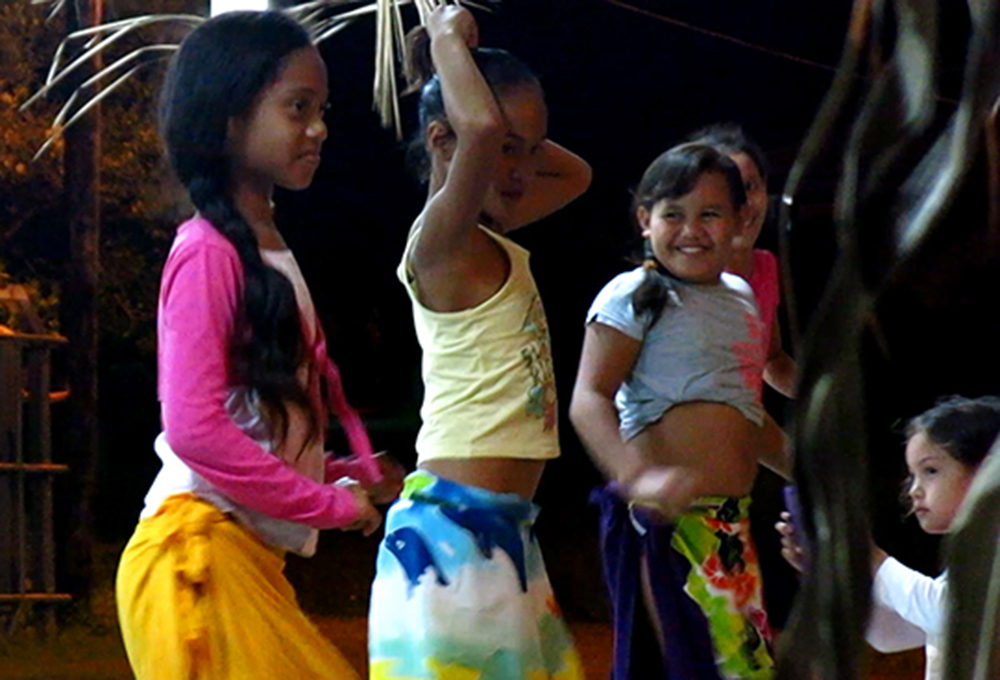
In December this year the Marquesan Arts Festival will be hosted in Hiva Oa. This four-yearly event is a series of music and dance contests and almost every village from the Marquesan archipelago will enter a team. There is a lot of pride at stake and the nightly dance practice is taken very seriously but we were welcome to come and watch. The sound of drumming echoing across the bay is so evocative of the South Sea islands and close up the throbbing rhythm reverberates in your chest. The concentration of the dancers with the primitive, exotic movements and the shrill chanting of the singers are very moving to see.
After about a week we departed Fatu Hiva bound for the “big metropolis” of Atuona on Hiva Oa. We do not plan to stay for the festival as we will be on route for Hawaii by then. There is quite limited space to anchor in Tahauku Bay (Atuona) and there were already 18 boats there but we managed to squeeze in between a French and a Swiss boat. Most boats buoy the location of their bow and stern anchors but with so many boats in close proximity you can imagine the mish-mash of tangled lines underwater. Every day dinghies buzzing about lifting and resetting anchors, pulling up old chains and active chains and bits of stray rope – confusion reigns and they tell me there is plenty of room for at least 10 more boats!!
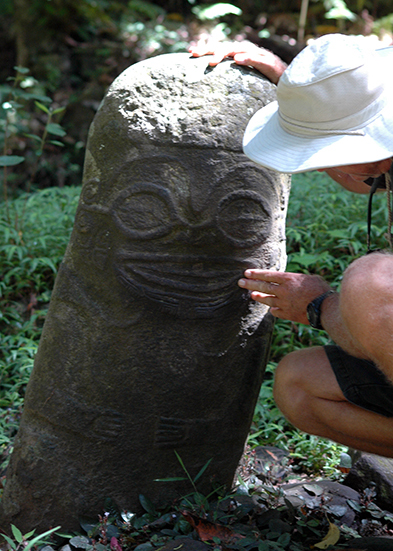
It’s a 30 minute walk or you can hitch hike into Atuona where you can get internet and re-provision. Cycling was definitely the best option until someone stole Neil’s rear wheel! The swanky new tyres he bought in New Zealand proved to be irresistible to the locals and we were unfortunate that the lock did not stretch enough to go through both wheels. I was lucky that they didn’t seem interested in the new secondhand bike I bought in NZ to replace my bike that was stolen in Pape’ete a couple of months back. Even paradise has bike thieves!!!
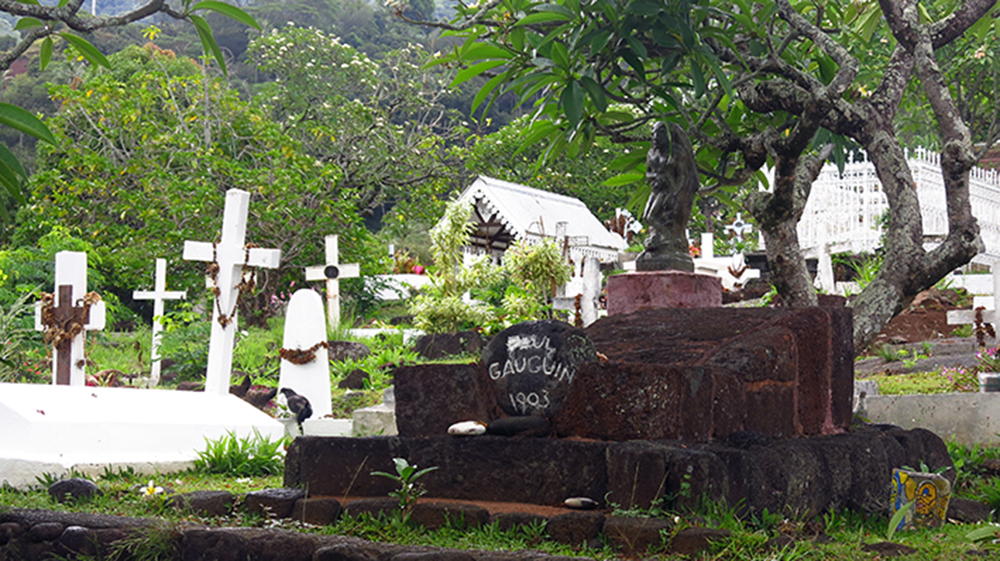
While in Atuona we visited the Espace de Paul Gauguin and were very impressed with the extensive collection of paintings. Of course they were reproductions but the quality seemed OK and the gallery was well laid out and well lit, cool and well maintained – it was very enjoyable. Afterwards I walked up the hill to the cemetery to see his grave which was simple unfinished rock under a Frangipani tree with a sculpture at the head.
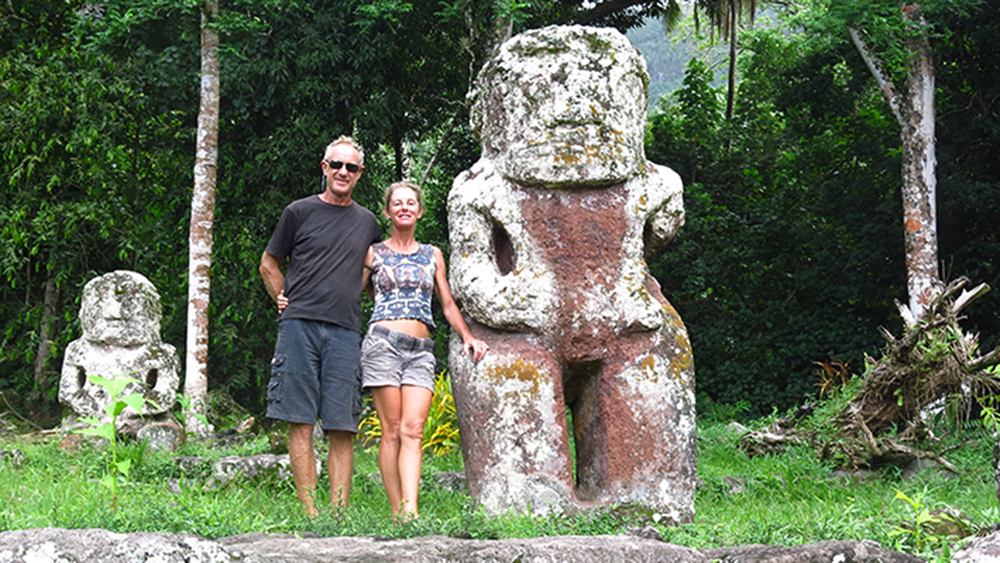
While in Hiva Oa we took a tour across the island specifically to visit an archaeological site at Puamau which is reputed to have monumental tikis and be the best preserved site in French Polynesia. Perhaps my expectations were too high or perhaps it was the deluge of rain as we arrived but I was disappointed with the site. The largest tiki was about 2.5m high and the carving was not very well preserved but the site did have an aura and if it hadn’t been raining I would have liked to spend longer there. Nonetheless the trip across the island was great fun and it was to see the change in vegetation from moist jungle in the south to brown and arid cliffs on the north coast.
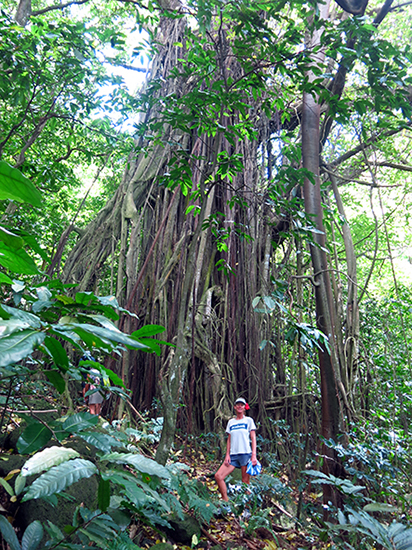
In mid-November we left Hiva Oa bound for Oa Pou, an island in the northern Marquesas just south of Nuku Hiva. It was an overnight crossing so it was early in the morning when we arrived. The bay at Hakahau is wide and with just one other boat there it was easy anchoring but with some swell wrapping around the headland from the east. It seemed a nice peaceful anchorage at 7am on a Sunday morning but the next couple of days were disturbed by pile driving as they were building a new wharf. Nonetheless we liked the village, there was very good artisanal centre where we bought a tiki carving in hibiscus wood, but the best bit was the restaurant at the art centre. They offered a buffet with a selection of local cuisine where you could pile your plate high and get internet all for 500CFP ($5) . . . superb.
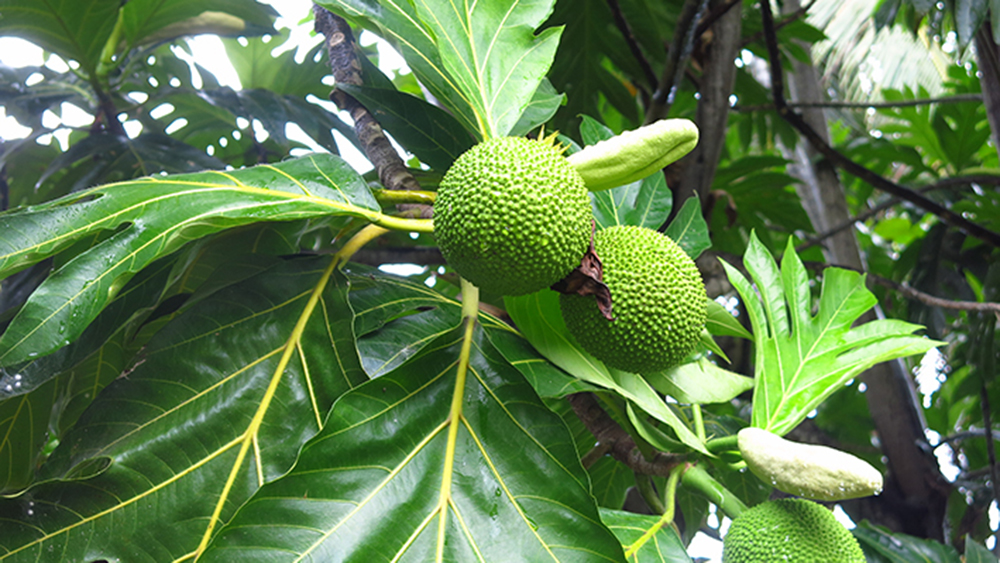
In the afternoon of our second day there Dulcinea, a yacht we had seen in Makemo and Fatu Hiva, arrived so it was lovely to catch up with our friends again. Because of the noise and swell we decided to move around to the next bay where we found another waterfall walk to do. Neil cried off as he had picked up a nasty infection in his leg from a scratch at the quay in Atuona so I went with Dave and Jan. It was quite muddy walk but once again we were rewarded with a waterfall straight out of a Bacardi advert. I remembered to take my shampoo so had a hair wash in paradise.
The next day Neil and I left for Nuku Hiva but that’s another story for another blog.
Suzy and Neil
